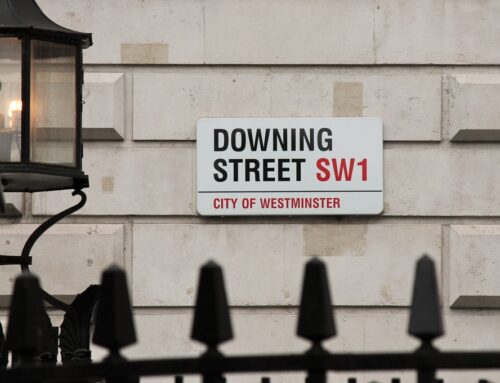Readers of this blog will know that I often take on PowerPoint (and its cousins) as detrimental to speech giving. It’s probably time for a corrective blog, especially after my “Imagine there’s no PowerPoint” spoof of last week.
Let’s be clear. Slides, done right, can greatly strengthen a presentation.
So what’s the right way to use PowerPoint and the other slide software programs? Think of musicals. A character breaks into song when the emotions are too strong for mere words. Songs in a musical mark the high points of the story – when the characters fall in love, or discover the truth about themselves, or decide to leave home.
Slides in a speech should cover the same ground. If you’re talking about a person, a picture of that person will bring him or her into the room in a way that mere words won’t. If you’re discussing some part of the world with enormous visual impact, then go for the visual impact. A client we’re particularly fond of has climbed Mount Everest, and I was the first person in line demanding pictures. Those pictures are most likely the closest I’ll ever get to that mountain, and they had to be in the speech.
More subtly, if you’re talking about a situation that invokes human emotion – one of great happiness or sadness – then pictures can bring that emotion immediately into play in a way that words do not. Ask any fundraiser about the importance of pictures of children to various charitable appeals!
More prosaically, use slides when you’re illustrating complex numbers or numerical relationships – a chart or graph can show in a glance a relationship that’s much harder to describe in words. But don’t fall into the trap of putting all your data on the screen. Just as a presentation should tell us what’s important, not tell us everything there is to be said on a subject, a good slide should show us the one or two important numbers, not the entire data set just because you have it.
It’s the speaker’s job to tell a convincing story, one with a single clear point, to the audience. Use slides to help reinforce that single point and that story. Don’t use slides as agenda place-holders, speaker notes, or bulleted lists of things you couldn’t be bothered to narrow down to the important one. Don’t make the audience work harder than you. Your job is to make a persuasive case for a point of view, not to drown your audience in data, and that goes for the speech and the slides.








Nick-
Spot-on, as always. I love having presenters consider two key Q’s:
1) For whose benefit is this slide?
2) Does this slide help me make tangible progress toward my point?
Helps to reduce unnecessary slides, and simplify message!
Brian
I really like the Carl Buechner quote “They may forget what you said, but they will never forget how you made them feel.” I think slides are used most effectively to amplify the feeling that you’re conveying with your words. Thanks for making us PowerPoint addicts feel a little less sheepish this week.
Thanks, Brian and Liane for your good comments. Glad you PP users are feeling better!
Building off your points, and perhaps something that is too big to handle in comments…
What if you work in an organization where PowerPoint slides are not only used during in-person presentations, but also expected to be able to stand alone *outside of* the presentation? For example, the executive request is to do something along the lines of “map out our strategy in mobile over the next year” for a presentation in 2 weeks. The expectation is EVERYTHING will be handled via a PowerPoint deck from square one. Deck has to be able to be used as basis for pre-presentation review, during the presentation, and usable as a proxy for the presentation for those that could not physically attend the presentation. To me, it is asking way too much for the format, like trying to merge a white paper to be read with a presentation to be watched into one, and in the end it fails miserably at both goals.
I agree — Terry — PowerPoint is a horrible format for that kind of thorough treatment of a subject. It’s not what PP was designed for. Word is much better! But if that’s the rule in the company, then I would suggest a hybrid of PP & Word. If that won’t fly, do 2 decks, one for the presentation, and one, more complete, for the record. You could even put them both in one file, with the first part marked “for the presentation” and the second part marked “for the record” which would have the completeness needed.
I was a consultant for 8 years. It took another 4 years to cure my addiction to Powerpoint slides.
I then spent 4 years using zero powerpoint – only my spoken words, flip charts and showing physical objects.
I work with documentary film makers – and often the commissioning editors for TV, distributors ask a powerful question: “what will be the treatment?”
They are asking if this documentary will be interviews, head shots – or will the film maker use more material to tell their story.
The TV commissioning editors know that people get bored of just head and shoulder shots of people talking. They want documentaries with multiple ways of showing the story.
This has led me to rethink my own keynote speeches – how to improve the “treatment”.
Powerpoint is coming back – but not with text on slides.
Photos and Black slides are my big thing now. Show a photo. Explain the photo. Black slide… bring the focus of the audience back to me. Tell the story.
I have come around towards the use of Powerpoint again – but as a support of me, not as the main actor.
As a consultant, when I heard the words “prepare a presentation” – my vision was “prepare a powerpoint deck”.
Now I prepare the speech, and then only after a lot of rehearsal do I turn on Powerpoint.
Conor —
Thanks for the thoughtful comment and the depiction of a user’s journey:-) I like where you end up — we often tell clients that slides have to prove themselves as essential or important for the story.
Thanks for the additional ideas re: prepping more than one deck if need be. My reality is PP is often being used as a crutch vs. taking the time and requisite thoughtfulness to develop the right story and focus on the audience. Often, slide quantity only “wins” or is used as the qualitative metric on a presentation “done well”.